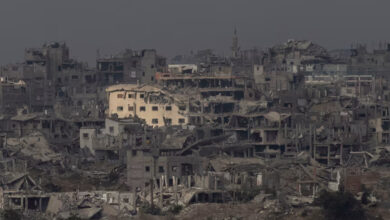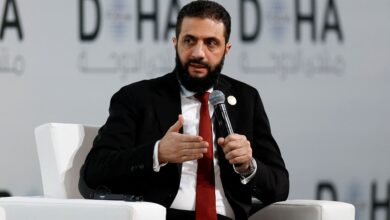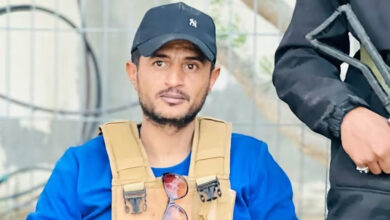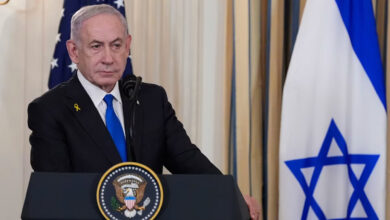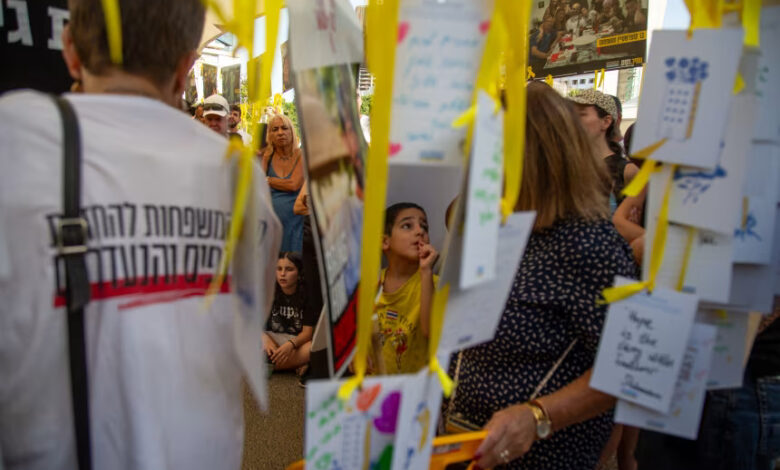
Ofir Braslavski is smiling for the first time in two years.
It’s a stark change of face for the father of 21-year-old hostage Rom Braslavski, who hit an emotional low in August after seeing his weeping, emaciated son in footage released by the Palestinian Islamic Jihad (PIJ) militant group from inside Gaza.
“We focus on the kiss, the hugs, his smell,” Braslavski told CNN Saturday as he looked onto a Tel Aviv plaza known as Hostages Square – the hub of hostage demonstrations for over 700 days.
“Many thoughts are running through my head,” he said, emphasizing that he was looking forward to nothing else but the reunion.
Like the hundreds of people in front of him, Braslavski can’t wait for the weekend to end: Forty-eight hostages – 20 of whom are believed to be alive – are set to be released by Monday at noon under the first phase of a ceasefire plan agreed by Hamas and Israel.
“Every second feels like it’s lasting forever, we’re just waiting for the moment they call us – to Re’im (the meeting point) and then to the hospital,” he said.
Among the crowd, it is US President Donald Trump to whom the admiration and thanks are directed, with signs, American flags and effigies of the American leader abundant.

Trump cornered Israeli Prime Minister Benjamin Netanyahu into agreeing to the first phase of the ceasefire deal. Many hostage families have blamed the Israeli leader for prolonging the war, deflecting responsibility for the October 7 attacks, and sabotaging negotiations around the release of the hostages and an end to the war.
But Braslavski isn’t interested in politics. He just wants peace – and believes it will stick, despite looming questions about the second phase of the deal, which include significant obstacles for both parties to overcome regarding Hamas’ disarmament, governance and full Israeli withdrawal from Gaza.
“I believe that now, with everything that happened, it’ll get better, it’ll be easier,” he said.
His optimism was shared among a crowd that felt more like a reunion of friends. Home-baked cookies were passed around with signs that read “Taste of Joy.”
Children walked among adults who shared sweets from their pockets. Strangers became friends and friends became family in a crowd that has felt anger, despair and hopelessness before finally feeling some happiness.
As Braslavski walked through the crowd, he stopped to embrace Michel Illouz – whose 26-year-old son Guy was killed in Hamas’ captivity – and who was repeatedly interrupted by the embrace of total strangers who wished to shake his hand after he gave an impromptu speech that included the last message his son sent to him from the Nova festival, where he was kidnapped.
There, two fathers – one waiting on his son’s remains; another expecting his son’s embrace, stood in a uniquely Israeli moment of paradox, suspended between grief and joy.

“It’s impossible to explain, this connection (between us) doesn’t exist anywhere else,” Braslavski said. “Those who lost their dear ones keep on coming here … it‘s something that’s difficult to grasp,” he added.
For Illouz, who rushed to the square in jubilation Wednesday night as the deal was announced, the impending hostage release is deeply complicated.
“I’m so proud to be able to meet the children who are alive, to be able to help recover the children, I’m too happy for the families,” Illouz said.
“But also I’m finding a place for my sadness,” he said. “It’s a very confusing moment. It’s a nightmare actually.”
As Illouz prepares for his son’s remains to return, he outlined the excruciating tasks that lie ahead.
“What actually will I get … what kind of bones? How will I find the way to recognize him? I’m so afraid of that – and then, to bury him,” he said.
“It’s going to be a long, long journey, that we’re just going to start,” he added.
While Illouz hopes to be able to bury his son in the upcoming days, that closure is not certain.
Netanyahu publicly implied for the first time Friday that not all of the deceased hostages held captive in Gaza will return, underscoring previous assessments that Hamas may not be able to find and return all of their remains. The Israeli government has, for months, been aware that Hamas may not know the location of – or is unable to retrieve and return – all 28 bodies.

On a crowded row of steps in front of the adjacent library, Simcha Cohen was coming to terms with her own complicated feelings. Cohen, who lost her own son to suicide years ago, is part of an NGO that supports bereaved parents – a group that, before October 7, used to meet regularly in the same plaza.
Simcha hadn’t returned to the square since that day in 2023, when the site became known as Hostages Square.
“I am not happy yet,” she said. “Maybe it will come tomorrow when they (the hostages) are home.”
But she knows that even the moments of joy to come will be spoilt by the trauma of the last two years.
Through tears, she points to a photo of Roi Shalev – whose partner was killed in the Nova music festival attack in front of him – and who died by suicide on Friday, just hours after the ceasefire came into effect.
Inside the library, the family of former hostage Ofer Kalderon – who was kidnapped from kibbutz Nir Oz on October 7, 2023, and released in February during the previous ceasefire agreement – were anxious for Monday to arrive.

Kalderon’s sister-in-law Sharon told CNN she had “knots” in her stomach, but that she and her husband Nissan had cancelled plans with their family so that they could show up for what they hoped was one last time at Hostages Square.
“We got the support of these families when Ofer returned. So we are here for them to help them, to be here, to hug them and be happy with them as they wait,” Sharon said.
“We wait, we wait, we wait.”

